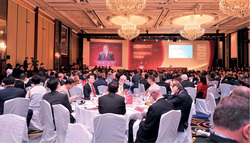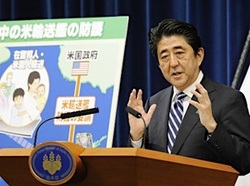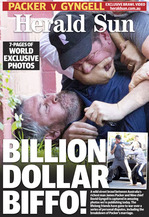 Source: www.iiss.org
Source: www.iiss.org While it is too early to make such definite pronouncements, it is true that Japan and Australia look as though they will be making further progress in bilateral dialogue on the sharing of submarine technology, the talks regarding which will continue in Tokyo next month. Already some commentators in Australia have reckoned that this will infuriate China, and most likely it will. Yet in the absence of any evidence that China intends to both be transparent in its defence spending and willing to negotiate with its neighbours over questions of territoriality, this, coupled with the current US stance on defence priorities, means that both Australia and Japan are `hedging their bets`, so to speak. Both countries stand to benefit from increased defence relations, and in the current climate that is a welcome change from the otherwise fractious ties between regional states. It may be some time before such negotiations actually result in the transfer of technology, but it is the next step in a burgeoning defence pact between two regional democratic states who are concerned about the rise of an autocratic power unwilling to engage on equal terms.
The danger of a lack of military communication between China and Japan became all the more apparent on Sunday this week when news of an incident involving a Chinese fighter aircraft and a Japanese Marine Self Defence Force P-3C Orion came to light (J). According to Japanese sources, the fighter aircraft, a Chinese SU-27 that was taking part in joint exercises between China and Russia in the East China Sea, came within 50 metres of the P-3C that was observing the joint exercises at the time. Given that this is an extraordinarily close distance in aviation terms, and in lieu of the collision between an US AWACS aircraft and a Chinese fighter aircraft over Hainan Island in 2001, the Japanese were suitably miffed enough to summon the Chinese ambassador to deliver a protest. For their part, the Chinese claimed that the Japanese had entered a `no-fly zone` declared over the training area, a zone within overlapping sovereign air space claims between China and Japan (J and E).
While these events were unfolding, within Japan`s political world further signs of dissent were making themselves apparent. On Wednesday one half of the dual leadership of the Japan Restoration Party, Ishihara Shintarō, announced that the party would herein split up, with Ishihara unable to reconcile with fellow leader Hashimoto Tōru`s plan to combine with the Unity Party of Eda Kenji. According to his explanation, Ishihara believed that the Restoration Party had been elected to bring about a fundamental change to Japan`s postwar Constitution, a position not shared by Eda (J). As an explanation this appears a little too convenient, and it may be that Ishihara was merely `spitting the dummy` at being overruled during negotiations with Eda and saw this as a means of recapturing the media`s attention on his ambitions. I have to say, though, that Michael Cucek`s take on the whole drama was damn funny…
Michael Thomas Cucek @MichaelTCucek 29 May 2014
Name needed for new Ishihara Shintaro splinter party. Thinking: Ai Sarenai Shin Hassei Aikokusha To - a.k.a. ASSHAT
So, here`s to the weekend dialogue in Singapore, and the wave of commentary that will result from it.



 RSS Feed
RSS Feed